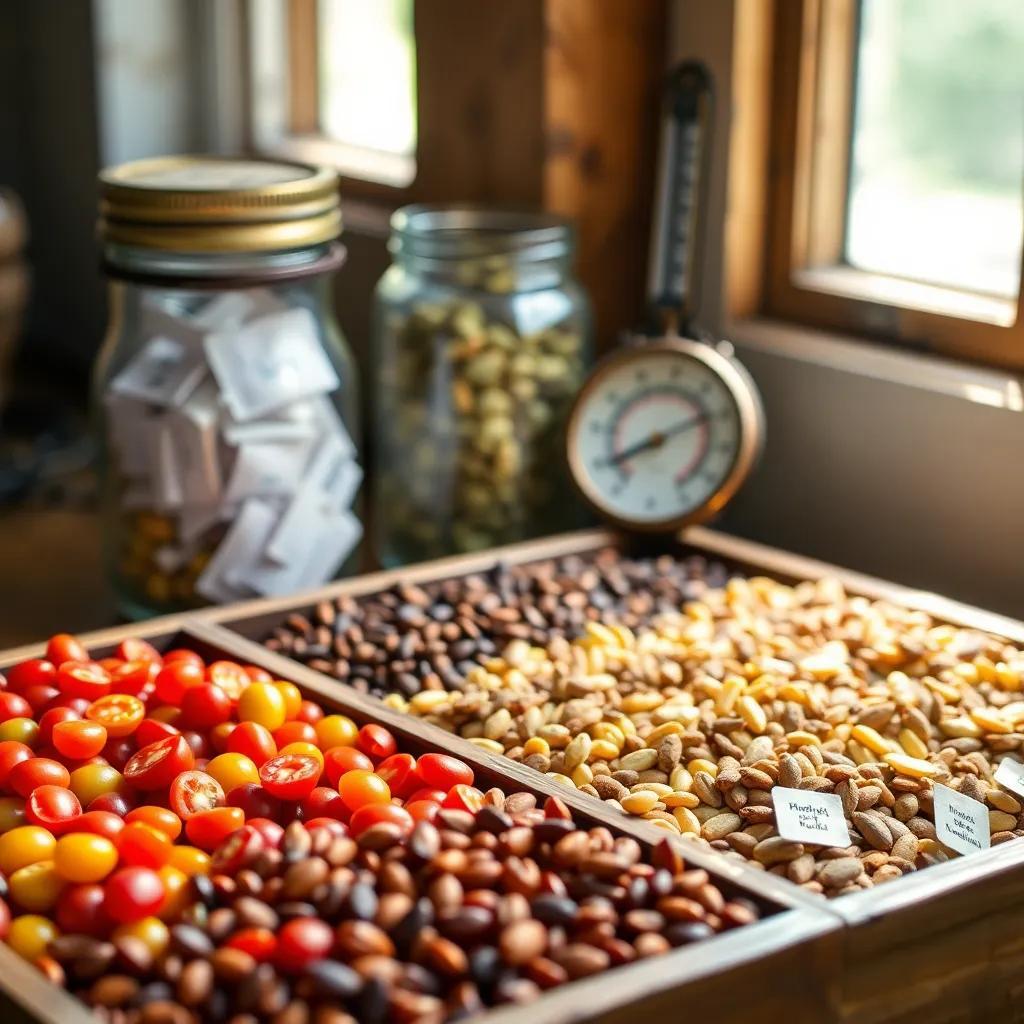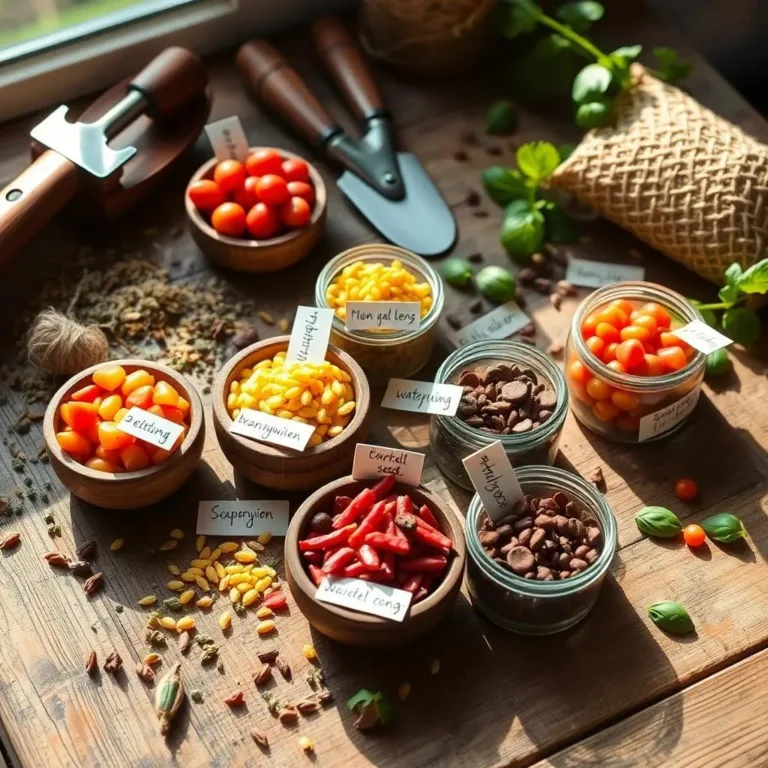Heirloom seeds are like little time capsules, bringing flavors and stories from the past right into our gardens! If you’re curious about how long these treasures can last and how to take care of them, you’ve come to the right place. Join me as we explore everything from storage tips to testing seed viability, so we can keep our gardens thriving and bursting with life!
Understanding Heirloom Seeds and Their Lifespan
Heirloom seeds are like little treasures from the past! They’re seeds that have been lovingly passed down through generations, often preserved for their unique flavors and characteristics. I like to think of them as the heritage of gardening! These seeds are usually open-pollinated, meaning they’re pollinated naturally by insects, wind, or even birds. This natural process helps maintain their genetic integrity, which is something many gardeners, including myself, truly appreciate.
But how long can these beauties last? Well, if stored correctly, heirloom seeds can remain viable for quite a while—sometimes even 50 years or more! That’s right, you could be planting seeds that once bloomed in your great-grandparents’ garden!
The lifespan of heirloom seeds depends on a few key factors. These include the type of seed, its maturity at harvest, and how well it’s stored. For instance, tomato seeds are known for their exceptional longevity, often thriving after being tucked away for a decade or more! On the other hand, some seeds, like lettuce, might only last a couple of years.
So, why should you care about heirloom seeds? Not only do they connect us to our gardening roots, but they also provide a diverse array of plants that you might not find in stores. I often think of heirloom plants as the distant relatives of modern hybrids! They come with stories and flavors that can truly elevate your gardening experience. Let’s celebrate those colorful varieties and remember, with proper care, these seeds can bring joy to our gardens for generations!
Factors Influencing the Longevity of Heirloom Seeds
When it comes to heirloom seeds, a few factors can really affect how long they stay viable. Just like a good friendship, maintaining the right conditions is important! So, let’s break down the key elements that play a role in the longevity of these treasured seeds.
- Moisture: Too much moisture is a big no-no for seeds! Keeping seeds dry helps prevent mold and sprouting. I always store my seeds with a little silica gel packet. It keeps things nice and dry, just like a desert!
- Temperature: Extreme temperatures can be tough on seeds. I like to keep my heirloom seeds in a cool, stable place—think of the refrigerator! A temperature between 32°F (0°C) and 41°F (5°C) is perfect for most seeds. It’s like giving them a winter vacation!
- Light Exposure: Seeds aren’t fans of bright lights. Keeping them in opaque containers helps protect them from light that can degrade their quality. Light is like that friend who overstays their welcome—better to keep things cozy and dark!
- Seed Maturity: Harvesting seeds at the right time is key. Mature seeds tend to last longer. Make sure they’re ripe and ready before you collect them!
- Seed Type: Different seeds have different lifespans. Some, like the Brandywine tomato, can last for years, while others may not be as durable. It’s like having a box of chocolates—some last longer than others!
By keeping these factors in mind, you can easily maximize the lifespan of your heirloom seeds. This knowledge not only helps you enjoy your gardening journey but also preserves the rich heritage these seeds represent. Let’s keep those seeds happy and thriving!

Best Practices for Storing Heirloom Seeds
Storing heirloom seeds properly is like giving them a cozy home! It’s super important if you want those little gems to last longer and stay viable. Here are some simple strategies that I’ve found helpful in keeping my seeds safe and sound!
- Keep Them Dry: Moisture is the enemy! I always add a packet of silica gel or a little dry rice in my seed containers. This helps absorb any extra moisture, keeping my seeds as dry as a desert!
- Cool is Key: The ideal temperature for storing seeds is between 32°F (0°C) and 41°F (5°C). I like to pop my seeds in a pretty glass jar and place them in the fridge. Just think of it as their winter vacation!
- Light Protection: Seeds don’t like bright lights. I store mine in opaque containers to block out light. You can use jars, envelopes, or even old film canisters—just make sure they’re sealed tight!
- Organize and Label: Keeping my seeds organized is a game changer! I label each container with the name and year of storage. This way, I can easily find what I need when planting season rolls around.
- Rotate Your Stock: Use the oldest seeds first! This helps keep your collection fresh and usable. After all, nobody likes expired goodies!
By following these practices, you can keep your heirloom seeds in tip-top shape and ready to grow beautiful plants when the time comes! Happy storing!
Testing the Viability of Heirloom Seeds
So, you’ve stored your heirloom seeds like a pro, but how do you know if they’re still good to go? Testing the viability of your seeds is a smart move and a must-do before planting. Here are the methods I use to check if my seeds are still sprouting champions!
- Germination Test: This is my favorite method! I take a few seeds and place them on a damp paper towel. Then, I fold the towel and put it in a warm spot. After a week, I check how many seeds sprouted. If most of them germinate, I know I’m good to plant!
- Float Test: This one’s great for larger seeds. I fill a bowl with water and toss in some seeds. The ones that float are likely not viable, while those that sink are usually still good. It’s like a little seed survival game!
- Vigor Test: This test measures how strong and healthy the seedlings are. I plant a few seeds in pots and watch how they grow. If they sprout quickly and robustly, I know my seeds are in great shape!
- Seed Viability Charts: Before you test your seeds, you can consult seed viability charts. These charts provide information on how long different types of seeds typically last. It can help you gauge what to expect!
By checking seed viability, you can maximize your gardening success. It’s a fun way to ensure you’re planting seeds that will reward you with beautiful blooms and bountiful harvests!
Dispelling Myths About Heirloom Seed Longevity
Heirloom seeds come with a rich history, but there are also some common misconceptions that float around. Let’s tackle these myths and set the record straight! Knowledge is power, my friend!
- Myth: Heirloom Seeds Last Forever: Oh boy, if only! While heirloom seeds can last a long time with proper storage, they don’t live forever. The reality is that seeds have a lifespan, and it often depends on how well you’ve cared for them.
- Myth: Seeds Expire on a Specific Date: Unlike milk, seeds don’t have an expiration date. Instead, their viability fades gradually over time. Testing your seeds regularly lets you know if they’re still good to plant!
- Myth: All Heirloom Seeds Have the Same Lifespan: This is a big misconception! Different types of seeds have different lifespans. For example, tomato seeds can last much longer than lettuce seeds. It’s like comparing apples to oranges!
- Myth: Freezing Seeds Guarantees Indefinite Viability: While freezing can help, it doesn’t guarantee your seeds will last forever. Improper thawing can put them at risk! If you choose to freeze, make sure to do it right—trust me, your seeds will thank you!
- Myth: Older Seeds Are Better: I love the idea of vintage seeds, but older doesn’t always mean better! Older seeds may lose their viability over time. Testing is key!
By debunking these myths, we can celebrate the true value of heirloom seeds and appreciate their unique characteristics. Let’s keep planting and enjoying the beauty of our gardens!

